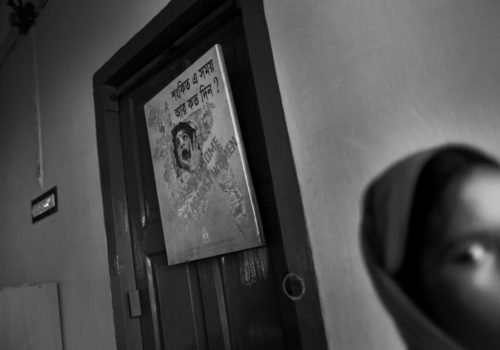Terror beat of Acid
A photo documentary by Khaled Hasan
Acid and burn violence are worldwide phenomenon, however the countries with highest rates of attacks are Bangladesh, Pakistan, Cambodia, Nepal and Uganda. Most victims are women; many of them are below the age of 18. However, in recent years even children, older people and young men have also been attacked. In Bangladesh in the last 10 years, there were 3000 victims of acid attacks and most of them were women.
There can be many reasons for the attacks such as eve teasing, land disputes, dowry, personal jealousy, family and business feuds, rejection of marriage proposal or sexual advance. The faces of the women are always targeted. Many of the cases are self-inflicted resulting from years of depression, hopelessness, domestic violence and poverty.
In Bangladesh, acids are easily available and there are loose laws for its commercial use. Nitric or sulfuric acid, used in the attacks, can be bought from the black market for as low as $1 to $5. They are used in manufacturing industries such as dyeing, cotton, rubber, jewelry and also school and college laboratories, which finds its way to black market.
In 2000, there were 234 cases of acid attacks and 490 in 2002. In the last couple of years there has been a decline in the number of attacks. In 2010, there were 135 cases. There is no specialized government hospital for treating acid victims. There are only a few beds for burn injuries in the government run Dhaka Medical Hospital. As such many of the victims, who travel from the interiors of the village to the capital lose precious time in getting first aid or immediate treatment. A decade ago, there was no information about acid attacks so most of the victims were misdiagnosed or not treated in the community health centers. As the numbers have increased and acid attacks have become increasingly common, people are aware that in case of acid attacks they must splash water on the affected areas immediately and that medical help is available.
Between 1999 and 2009, there were 2314 incidents of acid attacks and 2957 survivors. Violence against women is common in Bangladesh and acid attacks are one of the most common forms of violence in rural areas.
Acid melts the tissues and even dissolves bones. Often eyes and ears are permanently damaged. Many victims have to undergo over dozens of reconstructive surgeries to lead a functional life. No funding is available for cosmetic surgery, and most victims belong to rural areas, so they can never afford expensive procedures. As such they are scarred for life and very few ever get married.
Emotionally the victims are squashed for life. In a few seconds their identities are horrifically crushed. The survivor never really heals. Most of the attacks happen in impoverished countries, there is very little scope for rehabilitation, counseling and long-term care.
My project aims at dispelling the common myth that acid attacks happen only in conservative Islamic countries as a means of punishing or suppressing women. This will create greater understanding of the problem at an international level.
As a photographer I have been documenting underprivileged communities and social injustice in Bangladesh for the last 5 years. My reportage shows the horrors of acid attacks, while sensitively portraying the victims as survivors. In cases of property or land disputes, women are attacked because the destruction of women’s beauty is seen as a loss of honor. Women are victimized for personal squabbles between men. I want to show the stories of women being caught in the crossfire, unaware, and left stunned and disfigured; life after attacks, the struggle of the family and the community to accept a survivor and also the long and painful process of healing. My objective is to show the damage caused by acid culture, which has left thousands impaired, burnt and maimed for life.
Khaled Hasan
http://www.khaledhasan.com/#a=0&at=0&mi=2&pt=1&pi=10000&s=0&p=6
















